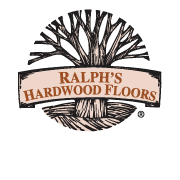The rustic or vintage aesthetic refers to a design style that is characterized by a rough, weathered, or antique look. This design style incorporates natural materials, such as wood, stone, and metal, which may be left unfinished or have a rough, weathered look.
A distressed hardwood floor has a rough or worn look, as if it has been subjected to wear and tear over time. This type of flooring is becoming increasingly popular in modern interior design, as it adds character and a sense of history to a space. Distressed finishes can also be helpful in disguising minor imperfections or wear on a floor, as they add a natural-looking patina. Scratches, dents, and other imperfections can be blended into the distressed finish, creating a cohesive look that adds character to a space.
Distressed Wood Techniques
Distressed hardwood flooring is achieved through a variety of techniques. We have 4 types of distressing:
Wire Brush - This technique uses a wire brush to scrape the surface of the wood, creating a rough, textured look by digging out the soft grain. The wire brush can be dragged across the surface of the wood in different directions to create a more varied, weathered appearance.
Hand Scraping - A tool such as a scraper or chisel is used to manually scrape the surface of the wood. The hardwood for the floor is given additional wear and tear like dents, dings, and scratches to add character and rustic appeal.
Skip sawn – Skip sawn refers to a type of distressed texture that mimics the look of reclaimed material with original blade marks that were not removed during milling.
Distressing – Beat up the floor with some specialty tools to make it look like a factory floor.
The Best Wood for Distressed Finishes
The species of wood that can be used for rustic flooring depend on the region and availability. Common species include Pine, Oak, Maple, Douglas fir, and Hickory. Pine is used for its natural knots and blemishes, which give it a rough, weathered look. Oak is popular due to its rough, textured grain and variety of colors, ranging from pale to dark. Maple is often used, but finished to give it a distressed or worn look. Douglas fir is popular because of its rough, textured grain and natural knots, while Hickory's strong, durable grain can be finished to give it a distressed or worn look.
What Complements Distressed Hardwood Floors?
Handmade or artisanal elements, such as handcrafted furniture or decorative items, can add character and uniqueness. Rustic or vintage design often combines old and new elements, such as antique furniture and modern lighting, to create an eclectic, collected look. Earthy colors, such as browns, greens, and grays, are also commonly used, as they can help create a natural, organic feel.
When choosing a distressed hardwood floor, it is important to consider the overall style of the space. Rustic flooring can complement a variety of design styles, from farmhouse to industrial to contemporary. It is important to select a finish and wood species that best suits the space and the desired aesthetic.















